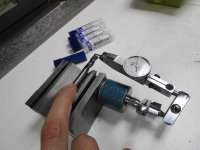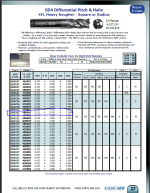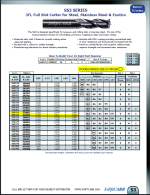I am having problems with end mill runout. I previously suspected the tool holder collet to be the problem. You can read all about that here if you like.
The collet was a problem. I have that sorted now, but I am still getting bad runout. I am now on to suspecting the end mills themselves.
The end mills are 5/16" 3 flute, .060" R carbide mills that I use to rough out a slot.
Please see the picture below for how I am measuring the runout. Does this look like an accurate way to check them? The test indicator in the photo was zeroed on the lowest flute. It's now reading on the highest flute. Repeatedly checking the flutes gives consistent results, so I'm inclined to think that there's nothing wrong with my method, but maybe one of you can tell me otherwise.
I brought this up to the manufacturer and told them how much runout I was getting. They told me that was outside of their tolerance and that they would send me some new end mills. They assured me that they would check these new end mills before sending them, but I am getting the same measurements and poor tool life with these new tools. I can see that they are from the same batch as the originals. So, did the end mill manufacturer fail to check these, or is there something wrong with the way I'm checking them? I am currently looking at other manufacturers since my experience hasn't been great with this one.
Premium ER collets
Who makes a good ER collet with low runout? REGO-FIX? Techniks? Or do you guys have good success with the Maritool collets? I had a job running great- incredible tool life, good chip formation, good cycle time. I was happy. Then, the 5/16" solid carbide 3-flute end mill that I'm slotting with...
www.practicalmachinist.com
The end mills are 5/16" 3 flute, .060" R carbide mills that I use to rough out a slot.
Please see the picture below for how I am measuring the runout. Does this look like an accurate way to check them? The test indicator in the photo was zeroed on the lowest flute. It's now reading on the highest flute. Repeatedly checking the flutes gives consistent results, so I'm inclined to think that there's nothing wrong with my method, but maybe one of you can tell me otherwise.
I brought this up to the manufacturer and told them how much runout I was getting. They told me that was outside of their tolerance and that they would send me some new end mills. They assured me that they would check these new end mills before sending them, but I am getting the same measurements and poor tool life with these new tools. I can see that they are from the same batch as the originals. So, did the end mill manufacturer fail to check these, or is there something wrong with the way I'm checking them? I am currently looking at other manufacturers since my experience hasn't been great with this one.




